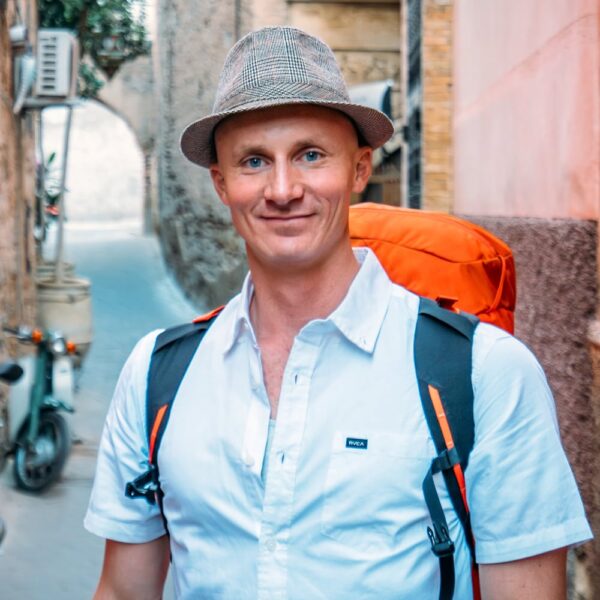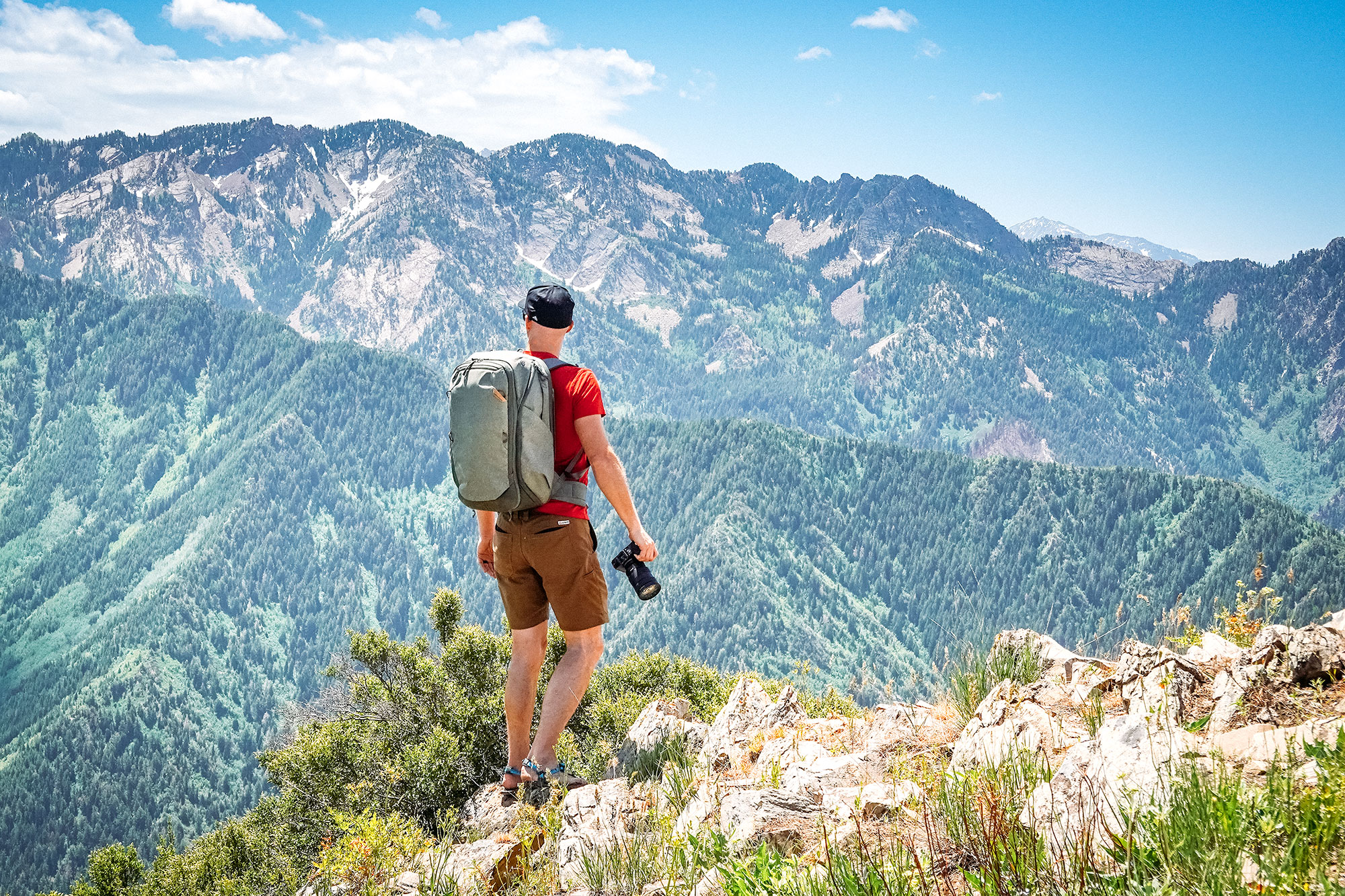Looking to improve your travel photography? I’ve spent 10-years shooting photos from destinations around the world. Here are my favorite travel photography tips for beginners.

Some people collect souvenirs when they travel, I prefer to collect beautiful images with my camera.
Travel photography is like a time machine, freezing memories from a journey that you can look back on and enjoy for years. Plus it can help others find new inspiration.
Every travel destination has its own look, culture, history, people, feelings, landscapes, and stories.
Learning how to capture these subjects through photos helps convey the spirit of a place to others, giving them a glimpse of what it might be like to venture there.
I never went to school for photography. And yet here I am now, making my living as a professional travel photographer who regularly licenses images to tourism boards, brands, and occasionally glossy magazines.
I've slowly learned the techniques of travel photography over years of reading books, watching online tutorials, and regular practice to improve my craft. You can learn this way too -- if you put in the effort!
Below you'll find my favorite beginner travel photography tips to help improve your images during your next vacation!
Jump to:
- Travel Photography Tips For Beginners
- 1. Wake Up Early, Stay Out Late
- 2. Pre-Trip Location Scouting
- 3. Ask For Permission From Locals
- 4. Never Stop Learning
- 5. Rule Of Thirds In Photography
- 6. Pack A Lightweight Travel Tripod
- 7. Experiment With Composition
- 8. Make Travel Photography A Priority
- 9. Don't Underestimate The Human Element
- 10. Patience Is Everything
- 11. Protect Against Theft
- 12. Shoot Travel Photos In Manual Mode
- 13. Always Bring A Camera
- 14. Get Lost On Purpose
- 15. Backup Your Travel Photos
- 16. Get Better At Post Processing
- 17. Don't Obsess Over Camera Equipment
- 18: Look For Leading Lines
- 19: Framing Your Photos
- 20: Be Nice & Have Fun!
- More Travel Photography Resources
Travel Photography Tips For Beginners
1. Wake Up Early, Stay Out Late
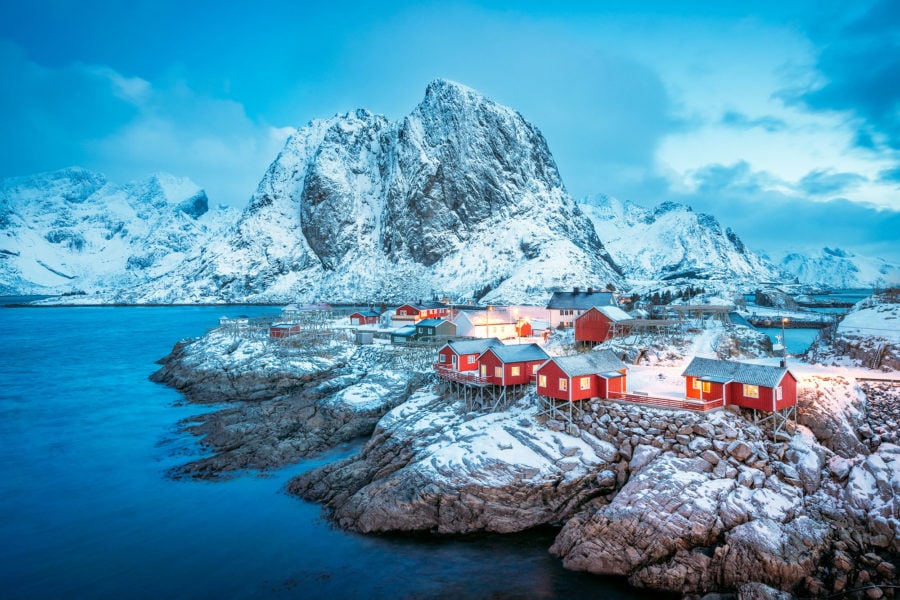
The early bird gets the worm. I'm sure you've heard that phrase. Well, it's also very true for travel photography. Light is the most important ingredient for great photography -- and soft, warm, morning light creates amazing images.
Waking up early also means you'll have to deal with fewer tourists and other photographers. Want an epic postcard shot of a famous landmark like the ruins of Chichen Itza or the Taj Mahal? Just get there early right when it opens and you'll pretty much have the place to yourself!
Sunrise isn't the only time to catch good light. Sunsets are also great (check out these shots from Lofoten). The hour after sunrise and the hour before sunset are nicknamed "golden hours" because of their soft, warm tones and eye-pleasing shadows. "Blue hour", is the hour after sunset (or before sunrise) when the sky is still blue, but city lights are turned on.
In comparison, shooting photos at noon on a bright sunny day is probably the absolute worst time for travel photography! In fact sometimes I'll just take a nap during the middle of the day so I have more energy for early morning and evening photography missions when the light is best.
2. Pre-Trip Location Scouting
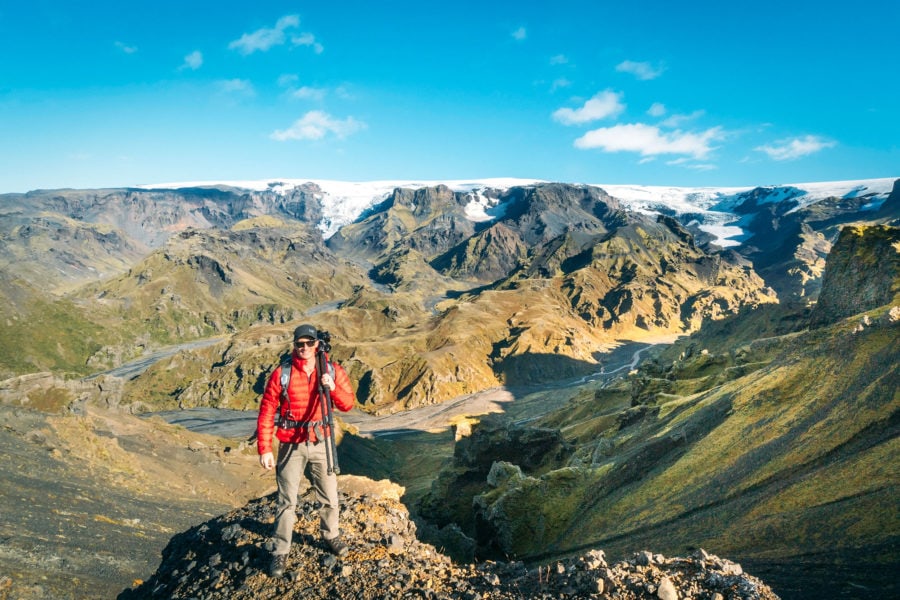
Read travel guidebooks about your destination. Scour the internet for articles and blog posts to help give you ideas for photos. Talk to friends who have been there. Reach out to other photographers. Become more knowledgeable about which images will capture the essence of a place.
Some of my favorite tools for travel photography research are Instagram, Pinterest, and Google Image Search. I use them to learn where iconic locations are. Actual postcard racks are also a great tool for helping to create a "shot list".
Once I know the names of potential photo locations, I’ll do more research. Which time of day has the best light? How difficult is it to reach certain vantage points? What time does an attraction open, and when will tourist traffic be low? What will the weather be like?
Wandering around with no plans has its place, but being well prepared with research beforehand saves time so you can fully commit to producing amazing travel photography once you’re there, and maximize your time.
3. Ask For Permission From Locals
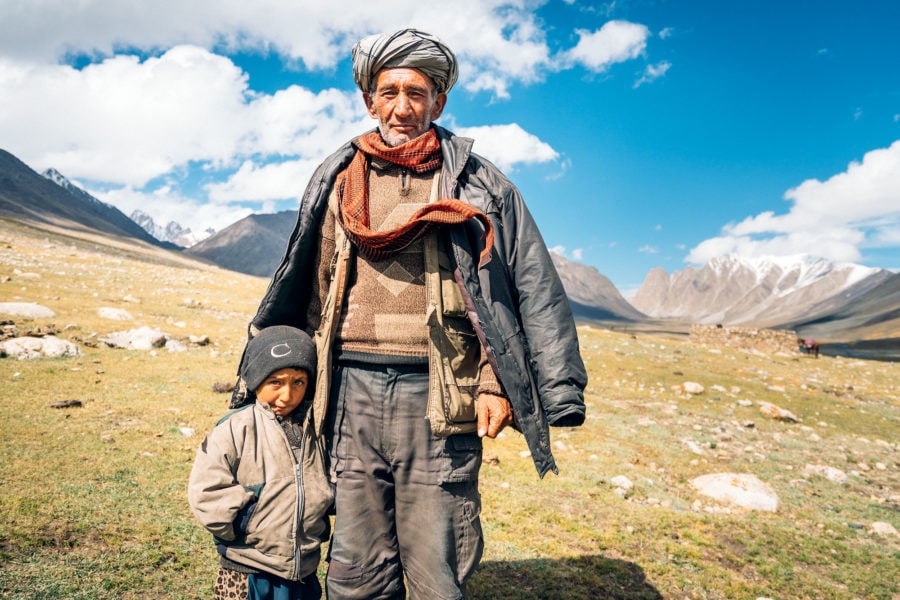
Photographing local people in a foreign country is tough for many photographers. What if they don't understand you? What if they say no? Will they get offended? It took me a couple years to get comfortable shooting portraits of locals, and even now I still get a bit nervous.
But I've learned the key is to talk to people first. Say hello. Ask for directions. Buy a souvenir. Compliment them on something. Chat for a few minutes BEFORE asking for a photo. It's far less invasive this way.
Always ask permission for close-ups too. Spend 15 minutes learning how to say "can I make a photograph" or "can I take your portrait" in the local language before you arrive. People really appreciate the effort, and it's a great way to make a new friend.
Some people will say no. Some will ask for money (I sometimes pay, but that's up to you). It's not the end of the world. Thank them for their time, smile, and move on to someone else and try again. Actually the more you get rejected, the easier it gets to ask!
4. Never Stop Learning
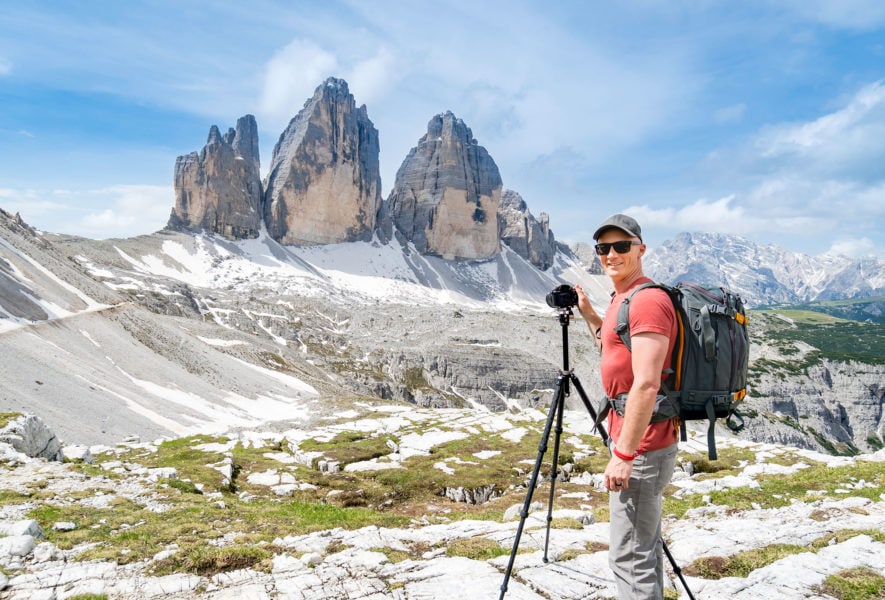
Enroll in some online photography classes. Invest in a travel photography workshop. Go out and practice on a regular basis. This is how you get better - not because you have the latest gear or use popular Instagram filters.
Even though I've been earning money with my photography for many years, there's always something new to learn. I regularly invest in online courses and books about photography to improve my craft. You should too.
Think you know everything about landscapes? Then go out and challenge yourself shooting portraits of strangers. Stalk animals like a hunter for a taste of how difficult wildlife photography is. Stay up late experimenting with long-exposures of the Milky Way.
You'll become a more skilled and resourceful travel photographer when you take the time to learn new techniques and skills from other genres of photography.
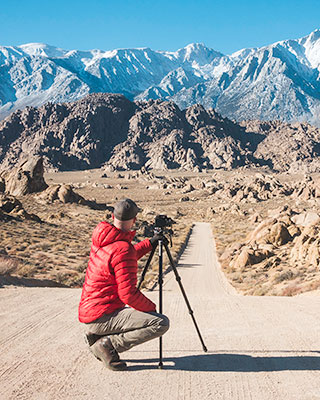
Online Photography Courses
Want to improve your photography? Fancy gear is nice, but learning from other photographers is a better investment.
5. Rule Of Thirds In Photography
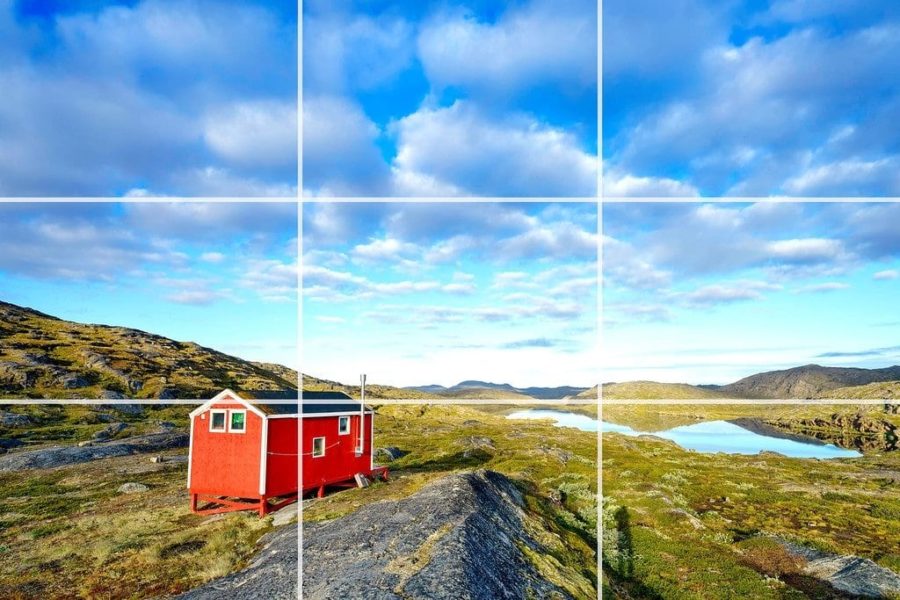
One of the most basic and classic of photography tips, understanding the Rule of Thirds will help you create more balanced compositions. Imagine breaking an image down into thirds horizontally and vertically, so it's split into different sections.
The goal is to place important parts of the photo into those sections and help frame the overall image in a way that's pleasing to the eye.
For example, placing a person along the left grid line rather than directly in the center. Or keeping your horizon on the bottom third, rather than splitting the image in half. Remember to keep that horizon straight too!
Composing using the Rule of Thirds is easily done by turning on your camera's "grid" feature, which displays a rule of thirds grid directly on your LCD screen specifically for this purpose.
Now, before you compose a travel photo, you should be asking yourself: What are the key points of interest in this shot? Where should I intentionally place them on the grid? Paying attention to these details will improve the look of your images.
6. Pack A Lightweight Travel Tripod

I think more people should be using lightweight travel tripods. A tripod allows you to set your camera position and keep it there. With the camera fixed, you can then take your time arranging the perfect composition.
You can also adjust exposure settings, focus points, and really spend time paying attention to the image you want to create. Or use advanced techniques like HDR, focus stacking, and panoramas.
Tripods give you the ability to shoot much slower shutter speeds (waterfalls, low-light, stars, etc) without worrying about hand-held camera shake. You can keep your ISO low (for less sensor noise) and use smaller apertures, so more of the image is in focus.
You'll have greater creative control over your camera’s manual settings when using a tripod. This doesn’t mean you have to lug a tripod around with you absolutely everywhere. I don’t.
But for tack sharp landscapes, low-light photography, self-portraits, flowing water shots, and sunsets/sunrises, a travel tripod makes a huge difference.
7. Experiment With Composition
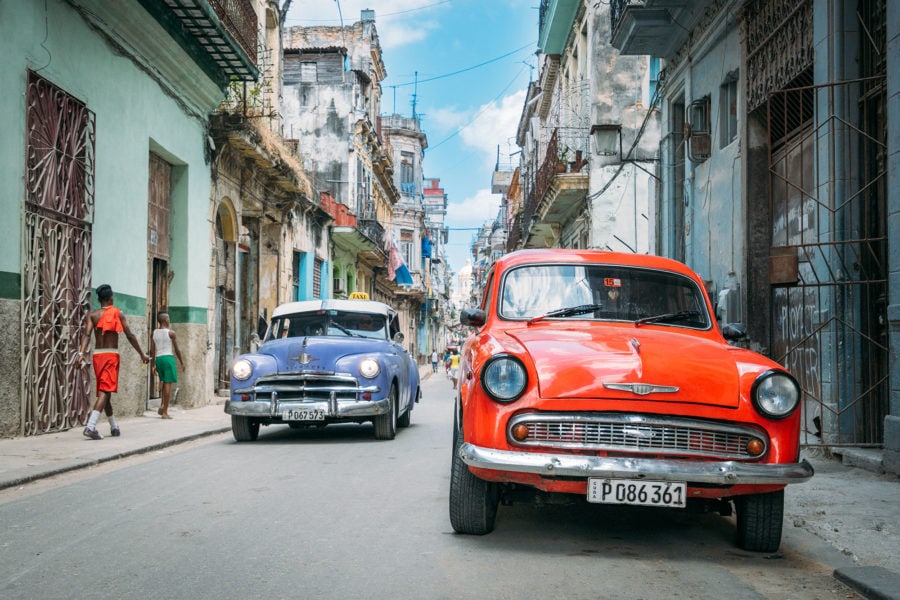
You can almost always come up with a better photo composition after some experimentation. Sure, take that first shot standing up straight. But then try laying on the ground for a low angle. Maybe climb up something nearby and shoot from a higher angle.
Along with different angles, try shooting from different distances too. Start with a wide shot, then a mid-range version, and finally, get up-close and personal. Never be satisfied with your first idea for an image!
Try to include powerful foreground, mid-ground, and background elements too. If your subject is a mountain range -- find a flower, river, animal, or interesting rock to include in the foreground. This gives images a 3-dimensional feel and helps convey scale, drawing a viewer's eye into the rest of the photo.
Focal compression is another great compositional tactic in travel photography. Compression is when a photographer uses a zoom lens to trick the eye into thinking objects are closer than they really are.
8. Make Travel Photography A Priority
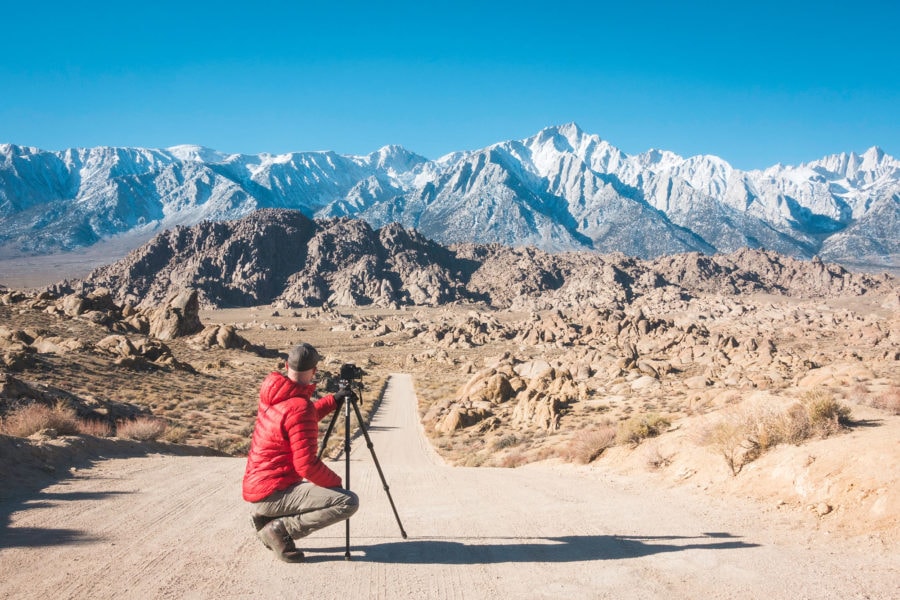
Attempting to take quick snapshots as you rush from one location to another will leave you with the same boring photos everyone else has. Make sure you plan "photography time" into your travel schedule. Good travel photography requires a solid time commitment on your part.
If you’re traveling with friends who aren't into photography, it can be difficult to find the time necessary to create amazing images. You need to break off on your own for a few hours to make photography your priority. I often prefer to travel alone or with other dedicated photographers for this reason.
Good luck trying to explain to a non-photographer that you'd like to wait around for an extra 30 minutes until the clouds look better. It doesn't go over well. For organized tours, try waking up early to wander alone for a few hours, getting photos before the tour starts.
Even better, splurge on a rental car for a travel photography road trip. This allows you to control when and where you stop for photos. There's nothing worse than being stuck on a bus while passing an epic photo opportunity, powerless to stop and capture it!
9. Don't Underestimate The Human Element
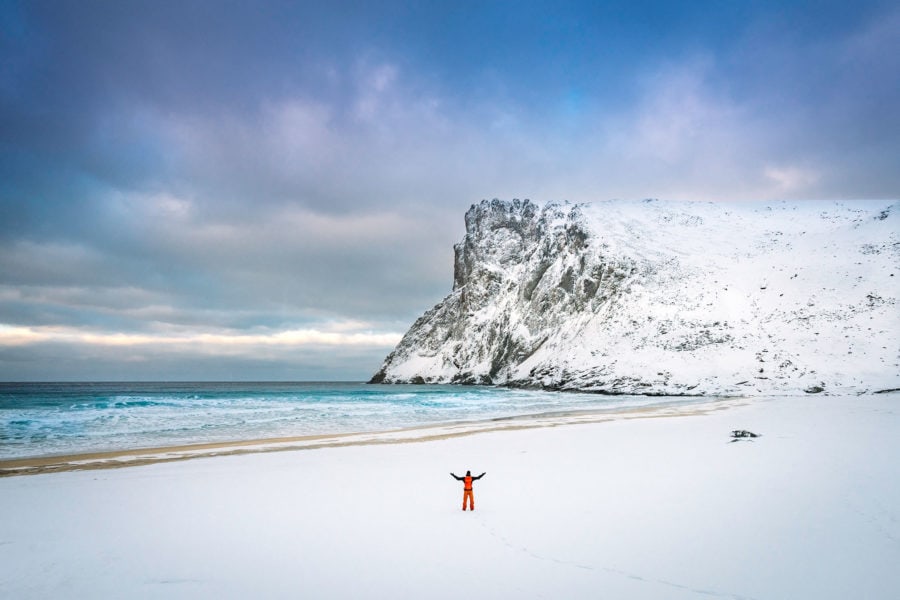
People like to live vicariously through human subjects in photos. Especially if the viewer can pretend the person in the photo is them. It adds more emotion to an image, you feel like you're experiencing the location yourself.
How do you accomplish this? By posing the subject in such a way that they become anonymous. Not showing the subject's face. This is why Murad Osmann's "follow me to" Instagram photos went viral. Viewers felt like they were the ones being led around the world by a beautiful woman.
The human element also gives a better sense of scale. By placing your subject in the distance, you can get a better sense of just how big those mountains really are. It's why photographing "tiny" people in large landscapes does well.
Adding a human element to photos helps tell a story too. Images seem to be more powerful when people are included in them. You can completely change the storyline of a particular photo depending on what type of human element you decide to incorporate.
10. Patience Is Everything
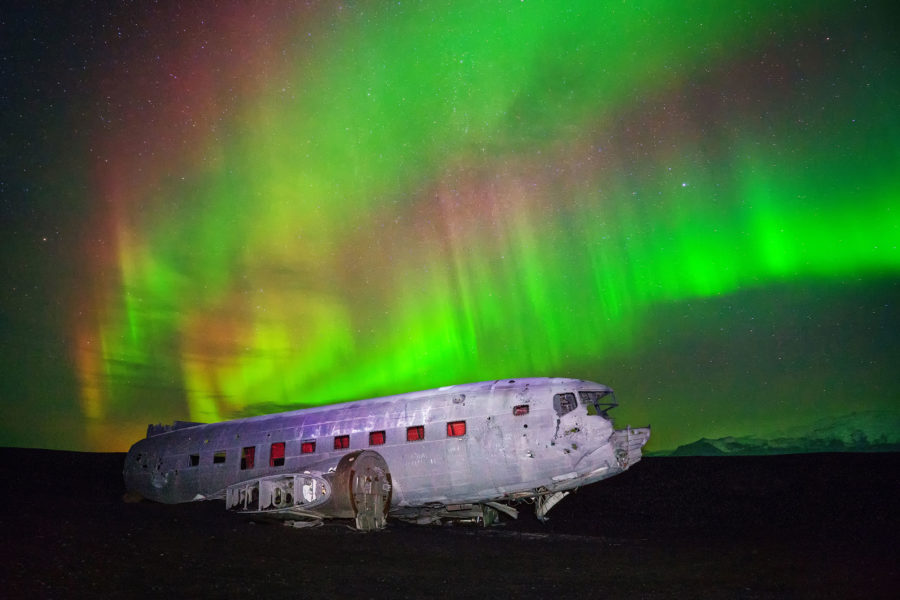
Photography is about really seeing what's in front of you. Not just with your eyes, but with your heart & mind too. This requires dedicated time and attention. Slow down and make a conscious effort at becoming aware of your surroundings before pressing the shutter.
Pay attention to details. Are the clouds in an eye-pleasing spot? If not, will they look better in 15 minutes? Sit at a photogenic street corner and wait for a photogenic subject to pass by. Then wait some more, because you might get an even better shot. Or not. But if you don't have the patience to try, you might miss a fantastic photo opportunity!
When shooting the Northern Lights in Iceland, I spent all night camping in the cold at a perfect location, simply waiting for the magical aurora borealis to appear. When it finally did, I waited a few hours more to capture the brightest possible colors.
Good photography takes time. Are you willing to spend a few hours waiting for the perfect shot? Because that's what professionals do. The more patience you have, the better your travel photography will turn out in the long run.
11. Protect Against Theft

Cameras are small expensive products. As such, they're a prime target for theft while traveling. I've heard many sad theft stories from other travelers. Luckily I've never had my camera stolen, but I also take precautions against it.
First of all, buy camera insurance. This is the best way to minimize losses if your camera gear does wind up in the hands of a criminal. Your homeowner or rental insurance might already cover you. If not, organizations like the Professional Photographers of America offer insurance to members.
Keep your gear secured when not shooting, like in a hotel safe or hostel locker. Never check expensive photography gear under a plane, always take it carry-on. Try not to flash your camera around in sketchy or poverty-stricken areas, keep it hidden in a nondescript bag until ready for use.
Register new gear with the manufacturer. Copy down serial numbers and save purchase receipts to help speed up insurance claims. Include your name & camera serial number on image EXIF data, so if your camera is stolen, you can track it down online using StolenCameraFinder.com.
12. Shoot Travel Photos In Manual Mode
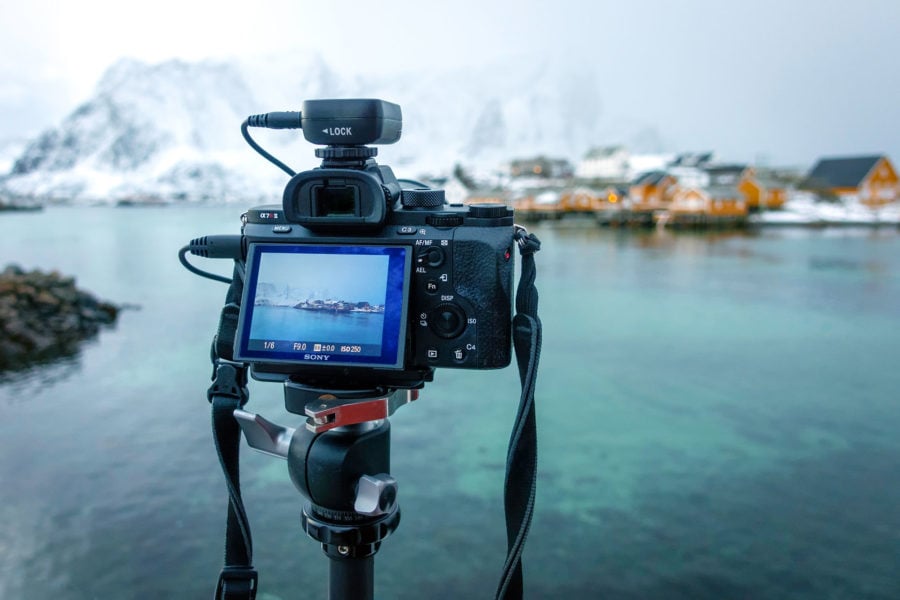
You'd think that modern cameras are smart enough to take incredible pictures on their own, in AUTO mode. Well, that's just not the case. While they do a pretty good job, if you want truly stunning images, you need to learn how to manually control your camera's settings yourself.
If you're new to photography, you may not realize all the camera settings that need to be adjusted. These include ISO, aperture, and shutter speed. If you want the best images possible, you need to know the relationship between them, and how to adjust these settings on your own.
To do this, switch your camera's dial into Manual Mode. This camera mode gives you much more control of the look of your images in different situations. By manually adjusting aperture you’ll have more control over the depth of field in your image.
By manually controlling shutter speed, you'll be able to capture motion in more creative ways. By manually controlling ISO, you'll be able to reduce the noise of your images and deal with tricky lighting situations. Here's a good free online tutorial about Manual Mode.
13. Always Bring A Camera
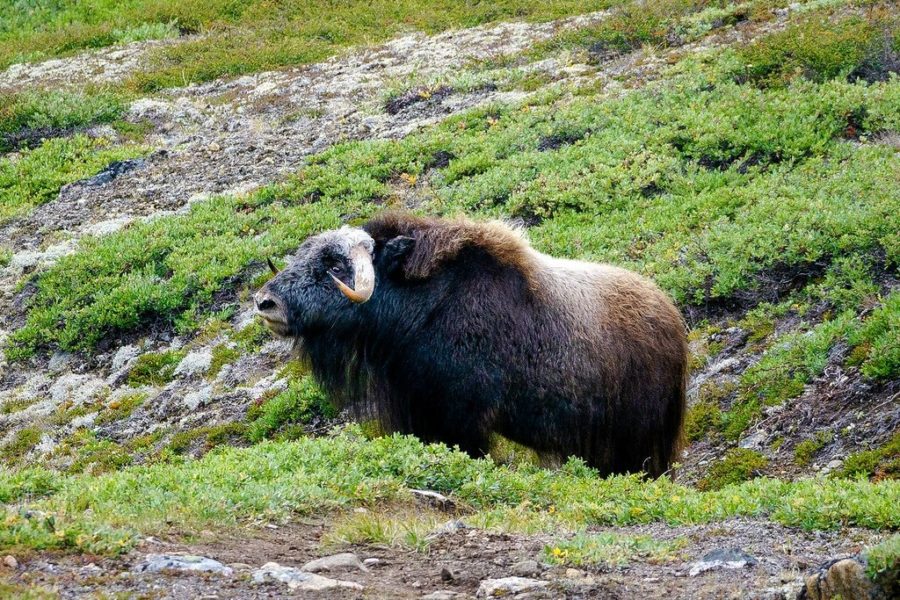
There is a saying in photography that "the best camera is the one you have with you". Be ready for anything, and always carry some kind of travel camera around, because luck plays a pretty key role in travel photography.
The difference between an amateur photographer and a pro is that the pro is planning in advance for this luck, ready to take advantage of these special serendipitous moments that will happen from time to time.
You never know what kind of incredible photo opportunity might present itself while you're traveling. Maybe while out walking you happen to stumble upon a brilliant pink sunset, a rare animal, or some random street performance.
While hiking in Greenland I kept my camera ready and within easy reach with a 70-200mm lens attached. This helped me capture great shots of reindeer, rabbits, an arctic fox, and musk oxen. If it had been packed away in my camera backpack, I would've missed these opportunities.
Keep your camera on you, charged up, and ready for action at all times.
14. Get Lost On Purpose
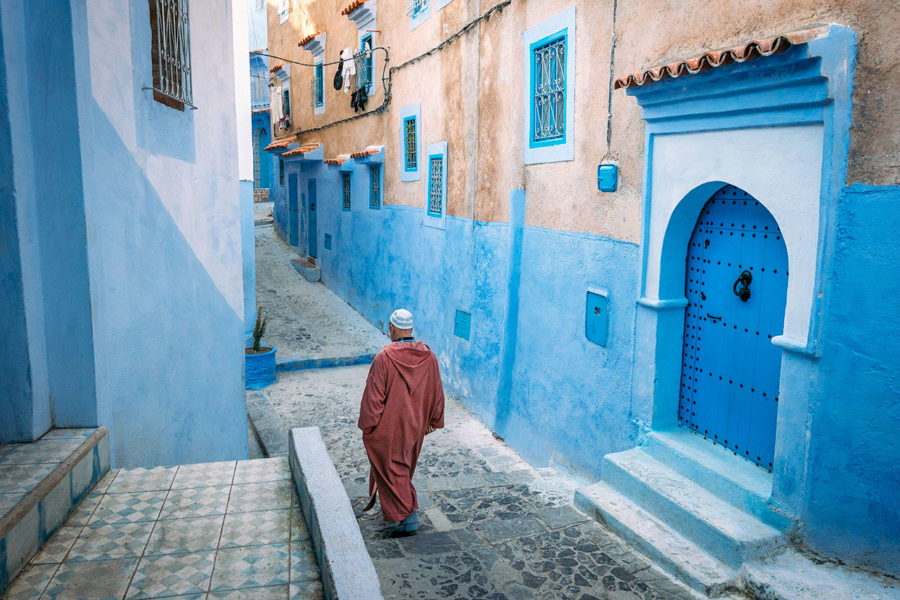
Ok. You've visited all the popular photography sites and captured your own version of a destination's postcard photos. Now what? It's time to go exploring and get off the beaten tourist path. It's time to get lost on purpose.
If you want to get images no one else has, you need to wander more. The best way to do this is on foot — without knowing exactly where you’re going. Grab a business card from your hotel so you can catch a taxi back if needed, then just pick a direction and start walking.
Bring your camera, and head out into the unknown. Check with locals to make sure you're not heading somewhere dangerous, but make a point get lost. Wander down alleys, to the top of a mountain, and around the next bend.
In many places, locals tend to avoid tourist spots. So if you want to capture the true nature of a destination and its people, you'll need to get away from the crowd and go exploring on your own.
15. Backup Your Travel Photos
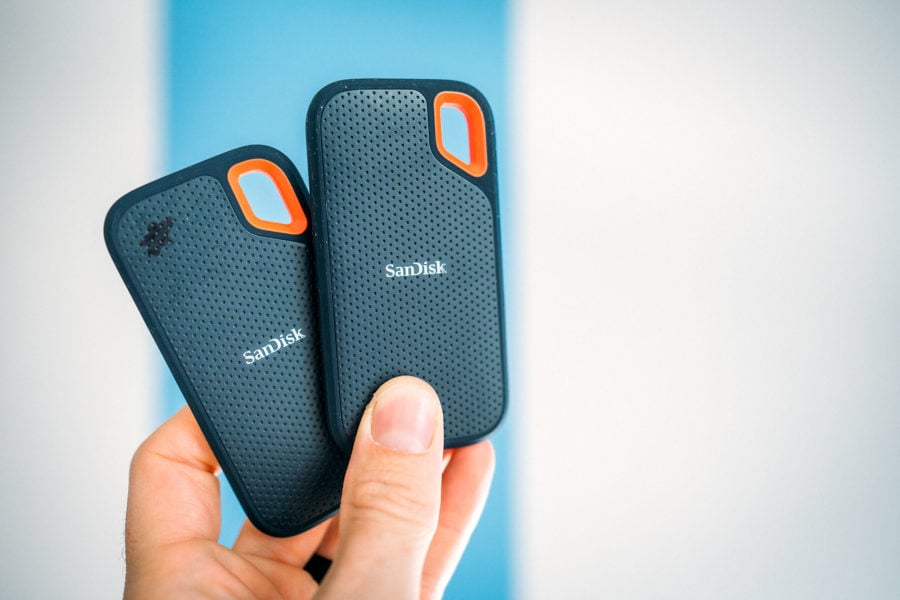
Along with camera insurance, I can't stress enough the importance of both physical and online backups of your travel photos. When my laptop computer was stolen once in Panama, backups of my photography saved the day.
My travel photography backup workflow includes an external hard drive backup of RAW camera files, as well as online backup of select images and another online backup of final edited images.
Sometimes, for important projects, I'll even mail a small hard drive loaded with images back to the United States if the internet is just too slow for online backup of large RAW files or video. I use Scan Disk Extreme Portable hard drives for physical backup and DropBox for online cloud storage.
16. Get Better At Post Processing

There is a ridiculous myth out there that editing your photos using software is “cheating”. Let’s clear that up right now. All professional photographers edit their digital images using software like Lightroom, Photoshop, or GIMP.
Some do it more than others, but basically, everyone does it.
Post-processing is an integral part of any travel photographer’s workflow. Just like darkroom adjustments are a part of a film photographer’s workflow. Learning how to process your images after they're taken is FAR more important than what camera you use.
Learn how to improve contrast, sharpen image elements, soften color tones, reduce highlights, boost shadows, minimize sensor noise, and adjust exposure levels (without going overboard) using the software.
If you are going to invest money somewhere, I’d recommend spending it on professional post-processing tutorials before you invest in the latest camera gear. Post-processing knowledge can really improve your travel photography.
17. Don't Obsess Over Camera Equipment

Want to know what travel photography gear I use? Well, here you go. But if you went out right now and bought all that stuff, not only would it be super expensive, I guarantee it won't improve your photography skills.
Why? Because the gear you use is not what makes a great photographer. Just like the type of brush a painter uses doesn't make them a great painter. It's knowledge, experience, and creativity that makes a great photographer. That's why photography courses can be a great gift for photographers too!
Professionals use expensive gear because it allows them to produce a greater range of images. For example, extremely low light star photography. Or fast-action wildlife photography. Or because they want to sell large fine-art prints.
Instead of buying the latest equipment, spend time learning how to use your current camera's settings. It's a far better investment, and cheaper too!
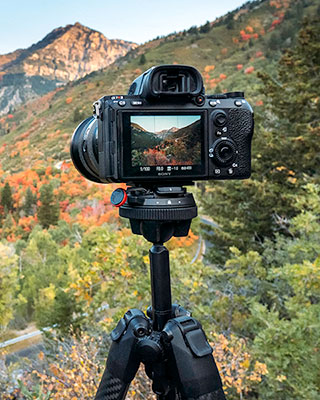
Best Cameras For Traveling
Looking to upgrade your camera anyway? Check out my review of the best portable cameras for travel photography.
18: Look For Leading Lines
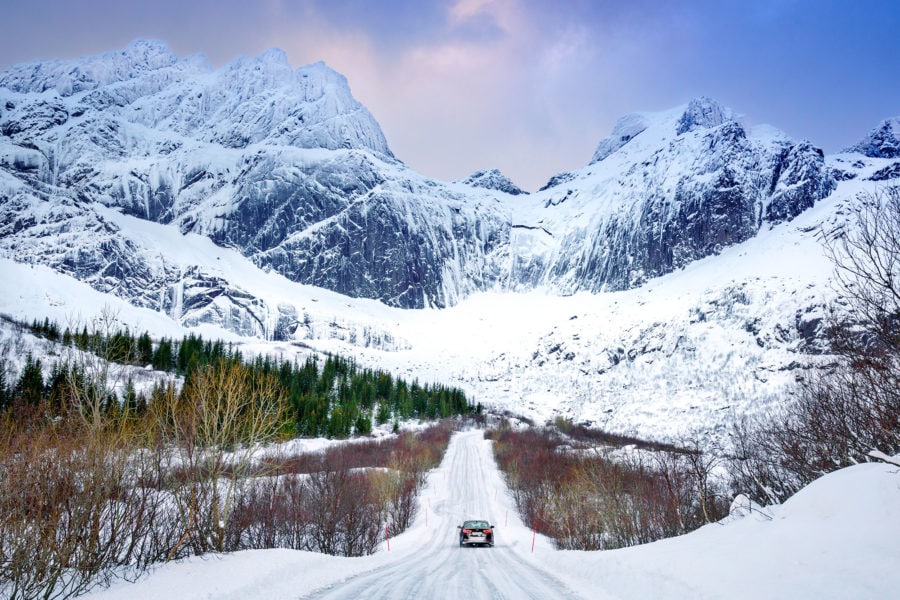
Travel photos can be full of cool stuff to look at, but if you can direct the viewer's attention THROUGH the photo, it makes for a wonderful experience. Framing your image using leading lines can help with this.
Basically, you try to use the land, objects, or other features to send people deeper into your photo, leading them to the main subjects. Some good examples of leading lines are roads, rivers, hiking trails, alleyways, or mountain ridges. The key is to draw the viewer’s eye into the frame.
19: Framing Your Photos
Occasionally I ask a random stranger to take a photo of me when I travel. This is usually pretty risky, because most people aren't great photographers, even if they think they are. I always laugh when my legs or an arm is completely cut out of the frame! LOL.
Learning to properly frame a photo takes practice. Leave a little buffer space in the sky above that mountain. Make sure the horizon is straight. Don't cut people's feet off the bottom of the photo. Does something in the background look out of place? Don't just focus on the subject, take a moment to glance around the rest of the frame to make double sure you're about to take great photo!
20: Be Nice & Have Fun!
I've seen many travel photographers who take their photography VERY seriously. You probably know the type, usually semi-professionals blocking off famous photography locations with a wall of tripods, ignoring closed off areas, yelling at anyone who gets in their frame.
Try to remember that we're all sharing these spaces with each other, and we have to learn to get along. Be kind to other photographers, practice patience and common sense. Try not to be the person that ruins everyone else's photo, but treat other photographers the way you would want to be treated!
More Travel Photography Resources
To go along with my top travel photography tips, here are some of the tools I've used to improve my photography over the years. I hope you find them as useful as I did! Remember, never stop learning.
Post Processing Software
- Adobe Creative Cloud - Powerful suite of editing programs (Lightroom & Photoshop) used by most professional travel photographers.
- The Nik Collection - Awesome photography plugins for polishing your final images. Noise reduction, sharpening, color filters and more.
Excellent Photography Tutorials
- Adventure Photography Pro - Learn how to produce incredible images, edit them, and promote them. 20% Off Code: VAGABOND20
- The Business Of Photography - Learn how to turn photography into your career. 20% Off Code: VAGABOND20
- Landscape Photography In Depth - Detailed online course from one of the best landscape photographers out there.
BOOKING A TRIP SOON?
Here are some travel resources to help you save money & have a great time!
- Ultimate Travel Packing List
- How To Find Cheap Flights
- Tips For Renting A Car Abroad
- How To Save Money Booking Hotels
- Why To Always Get Travel Insurance
- My Best Travel Tips For A Great Trip

